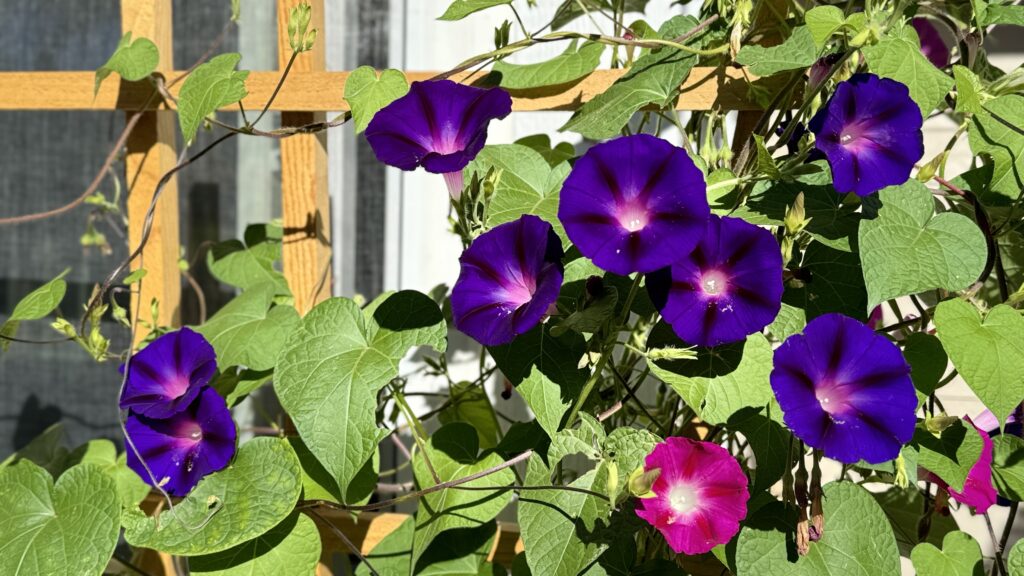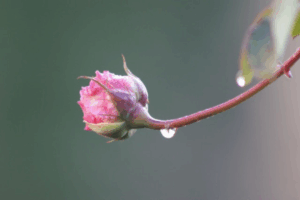Gratitude is not only the greatest of virtues, but the parent of all others. —Cicero
Good morning, Glory! 🌸
Roll up your sleeves and let’s dig in!
Last week, I did one of my favorite activities…
I spent time thinking about what I want to grow…not in my garden,
and not in my relationships, finances, or knowledge.
I asked myself, “What do I want to grow…in me?”
My responses included courage, self-control, and patience.
But the universe responded by putting Cicero’s words front and center:
“Gratitude is not only the greatest of virtues, but the parent of all others.”
My brain went into question mode…
“What if I grew my gratitude practice, would I also find courage, self-control, and patience?”
A three-for-one result?
Count me in!
But first, I had to admit I’d been neglecting my gratitude practice.
It had become mechanical…very much a cerebral activity…a mental checklist of things to be grateful for.
Fortunately, I was sitting in my backyard enjoying my gardens overflowing with colorful flowers and vibrant green vegetation when I realized…
Gratitude, much like a garden, doesn’t always look the same.
While I plant similar flowers and vegetables each season, the garden unfolds into a unique shape and provides an unpredictable yield each year.
Likewise, gratitude is not just about a fixed mindset of being thankful for what’s right in front of you.
It’s about tending to different types of gratitude—each needing care, nurturing, and patience to blossom in its own unique way.
There are endless varieties of gardens (flowers, vegetables, trees, shrubs)…
But in my experience, gratitude comes in three types—predictable gratitude, growth gratitude, and “what if” gratitude.
Predictable Gratitude: The Zucchini of Gratitude
In every garden, there’s that one plant that practically grows itself—zucchini.
It’s almost guaranteed to yield results, no matter how much you mess with it.
In the same way, predictable gratitude is the kind of gratitude that’s easy to experience and feels natural.
These are the daily blessings, the simple things that are always around us.
For me, it’s the first rays of sunlight peeking over the fence, or the sweet songs of the early birds as I start my day.
These things bring joy without effort.
And much like the zucchini plant, these opportunities for gratitude are a given—always just there…waiting for us to notice.
You don’t need to think much to harvest this kind of gratitude, because it’s easy to weave into your everyday routine. It could be your morning walk, the steadfast neighbor, or even your job that consistently supports you.
These are the people and experiences that are easy to appreciate.
It’s the low-maintenance gratitude that can grow effortlessly, just like a zucchini patch.
Growth Gratitude: The Plant You’ve Never Grown Before
Growth gratitude takes time. It requires patience, nurturing, and careful attention.
Just like trying to grow a plant you’ve never tried before—let’s say radishes—it requires a bit more investment.
Last year, I tried growing radishes…it was a bust.
I didn’t thin them out properly. They ended up with lots of showy greenery, but were stunted because they had no room to grow.
I wasn’t discouraged, though. I learned from my mistakes.
This year, I did my homework and also put reminders on my calendar to thin the seedlings at the appropriate time.
Growth gratitude works in much the same way.
It’s the gratitude that pushes you to stretch beyond your current comfort zone.
Maybe it’s for the new friendships you’re building, the first-time DIY home repair, or the personal challenges you’re facing.
This gratitude feels different because it’s tied to growth. And growth is often uncomfortable.
You’re not just grateful for what’s easily available; you’re grateful for the effort, the change, and the progress.
To grow this type of gratitude, you have to put in the work.
Maybe you’re learning to appreciate the struggle itself, or maybe you’re seeing how far you’ve come, even when the journey is hard.
This gratitude that isn’t just about immediate results—it’s about honoring the process of growth.
You learn to celebrate not just the destination but the steps you take to get there.
What-if Gratitude: The Japanese Maple of Gratitude
Then there’s “what-if gratitude,” the kind that feels like planting something truly special—like a Japanese maple.
These trees are beautiful, with their unique color and delicate leaves.
They are breathtaking. But they’re also finicky. The climate has to be just right, and it takes time to see them grow.
What-if gratitude is connected to dreams, desires, and visions for the future—things that feel far out of reach but are worth striving for.
It’s the gratitude you feel when you consider all the things that could happen in your life, things that are beyond your current reality.
For me, the Japanese maple represents something I’m working toward.
When I finally planted one in my yard, I knew it would require patience and belief that with nurturing and attention, the tree would thrive.
What-if gratitude can sometimes be intangible.
It’s the thing you might not have yet but are deeply grateful for in advance.
Maybe it’s the gratitude you feel for your future, or for the inspiring energy of pursuing a new project, relationship, or personal transformation.
It’s the belief that, in time, this dream will be fully realized…but what-if gratitude also yields its own seeds of courage, self-control, and patience along the way.
Just like planting a Japanese maple, you may not see immediate results, but you hold on to the possibility that it will one day flourish.
And you harvest gratitude for hope and wisdom in the journey to that day.
🌱 The Practice: Cultivating a Gratitude Garden
When you’re cultivating a garden, each plant needs something different.
🌱 The zucchini grows with little care, but you must still seek the fruit.
🌱 The radishes need more attention and learning from past mistakes.
🌱 The Japanese maple requires extraordinary patience, but you are rewarded when you reflect on the progress.
Similarly, each type of gratitude requires different care depending on the season of life you are in right now.
Experiment with one type of gratitude this week that aligns with your current season.
🌱 For Predictable Gratitude:
Start by noticing the small things. The sunlight, the steady rhythm of your daily routines, the familiar faces in your life. These are easy to spot and can be expressed daily. Try journaling about these small blessings every morning to set a positive tone for your day.
🌱For Growth Gratitude:
Try something new. Track your progress, no matter how small. Reflect on how far you’ve come, even if things don’t feel perfect. Write down moments where you’ve learned something new or made progress in areas that matter. Recognizing growth helps you honor the effort you’re putting in.
🌱 For What-if Gratitude:
Create a vision for your future. What are the things you dream of? Take a moment to truly feel grateful for those desires, even before they’ve fully materialized. Celebrate the fact that your dreams are alive, even if they’re still in the seedling stage.
Gratitude isn’t a one-size-fits-all practice.
Like tending a garden, each type of gratitude requires a different level of attention, nurturing, and patience.
By embracing these three types of gratitude—predictable, growth, and what-if—you’ll find that your gratitude practice can grow in ways you never expected.
And just like a garden, with enough care, it will bloom in the most beautiful ways.
Which type of gratitude you will commit to cultivating this coming week?














